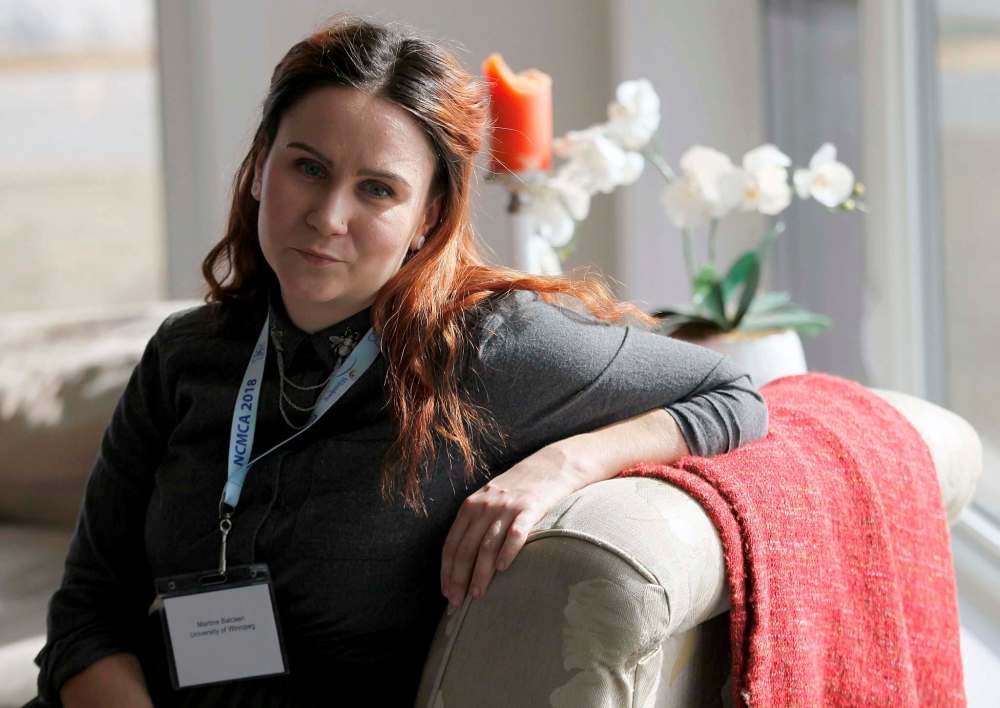Calgary researcher followed the buzz to city
Science student moved for the mosquitoes
Advertisement
Read this article for free:
or
Already have an account? Log in here »
To continue reading, please subscribe:
Monthly Digital Subscription
$0 for the first 4 weeks*
- Enjoy unlimited reading on winnipegfreepress.com
- Read the E-Edition, our digital replica newspaper
- Access News Break, our award-winning app
- Play interactive puzzles
*No charge for 4 weeks then price increases to the regular rate of $19.00 plus GST every four weeks. Offer available to new and qualified returning subscribers only. Cancel any time.
Monthly Digital Subscription
$4.75/week*
- Enjoy unlimited reading on winnipegfreepress.com
- Read the E-Edition, our digital replica newspaper
- Access News Break, our award-winning app
- Play interactive puzzles
*Billed as $19 plus GST every four weeks. Cancel any time.
To continue reading, please subscribe:
Add Free Press access to your Brandon Sun subscription for only an additional
$1 for the first 4 weeks*
*Your next subscription payment will increase by $1.00 and you will be charged $16.99 plus GST for four weeks. After four weeks, your payment will increase to $23.99 plus GST every four weeks.
Read unlimited articles for free today:
or
Already have an account? Log in here »
Hey there, time traveller!
This article was published 06/04/2018 (2795 days ago), so information in it may no longer be current.
Many Winnipeggers would consider moving from the city because of mosquitoes. Martine Balcaen moved here because of them.
Balcaen, a second-year master’s student in bioscience, technology and public policy at the University of Winnipeg, has studied mosquitoes since she arrived in the summer of 2016 from her hometown of Calgary.
“I love the topic of mosquitoes,” she said on Thursday shortly after she talked about her project at a meeting in Winnipeg of mosquito experts with the North Central Mosquito Control Association.

The association is made up of Manitoba, Saskatchewan, Western Ontario, North and South Dakota, Minnesota, Iowa and Wisconsin.
“Mosquitoes are the sole reason I am here. I came here to study mosquitoes.”
In fact, Balcaen said she came here immediately after receiving an undergraduate degree from the University of Calgary, so she could catch the summer mosquito season.
“I haven’t really noticed that much of a difference (with mosquitoes) between the cities,” she said, but noted last year was a low year for mosquitoes.
Balcaen said the first year of her study was designed to figure out how far most mosquitoes ventured from where they hatched, with the second year to determine the areas of the city they liked living in.
To do it, she set up mosquito breeding cages south of St. Norbert, counted how many mosquitoes were in them, sprayed them with a fluorescent dust and then released them.
When the mosquitoes were caught in traps, Balcaen discovered most of them travelled only about four kilometres. Currently, the city larvicides for mosquitoes up to 12 kilometres outside the city limits, but the city has said it will know soon how far it will have to restrict the distance based on provincial funding.
“If it had landed on you, you wouldn’t see the pink fluorescent, but under the microscope, you could see it. I found 85 per cent of my mosquitoes stuck or were captured within four kilometres of breeding.”
During Balcaen’s second year, she used four different fluorescent colours before releasing four separate batches of mosquitoes over a two-week period.
She is still analyzing her findings, but the mosquitoes were heading mostly to areas she calls “green infrastructure,” including wetlands, rivers and forests.
“If we can pinpoint exactly what mosquitoes like or where they hang out, we can optimize the city’s mosquito strategy.”
Ken Nawolsky, the city’s superintendent of insect control, said in a statement understanding mosquito movement is an important piece in improving its control program.
“Despite implementing a comprehensive larval and adult mosquito control program, City of Winnipeg insect control staff feel that possible movement of adult mosquitoes from rural untreated areas adjacent to the city into urban residential areas may occur during years with large mosquito outbreak events,” Nawolsky said.
“Movement of these mosquito populations may increase the presence of nuisance or disease-carrying female mosquitoes within the city and lessen the overall effectiveness of the mosquito control program.”
kevin.rollason@freepress.mb.ca

Kevin Rollason is a general assignment reporter at the Free Press. He graduated from Western University with a Masters of Journalism in 1985 and worked at the Winnipeg Sun until 1988, when he joined the Free Press. He has served as the Free Press’s city hall and law courts reporter and has won several awards, including a National Newspaper Award. Read more about Kevin.
Every piece of reporting Kevin produces is reviewed by an editing team before it is posted online or published in print — part of the Free Press‘s tradition, since 1872, of producing reliable independent journalism. Read more about Free Press’s history and mandate, and learn how our newsroom operates.
Our newsroom depends on a growing audience of readers to power our journalism. If you are not a paid reader, please consider becoming a subscriber.
Our newsroom depends on its audience of readers to power our journalism. Thank you for your support.


